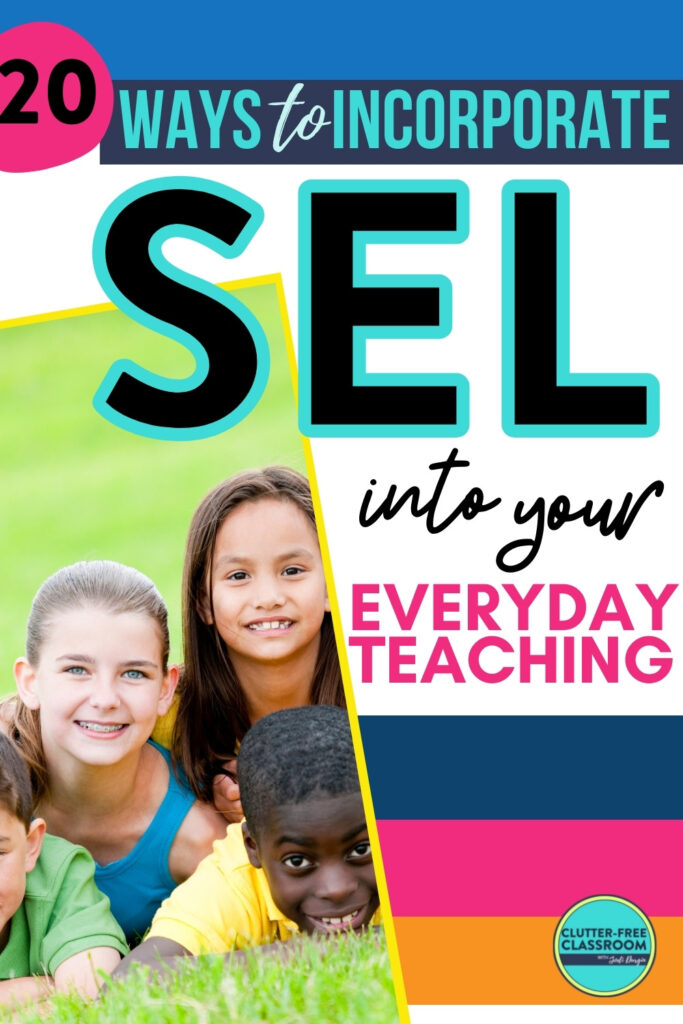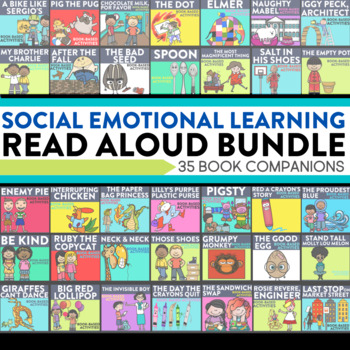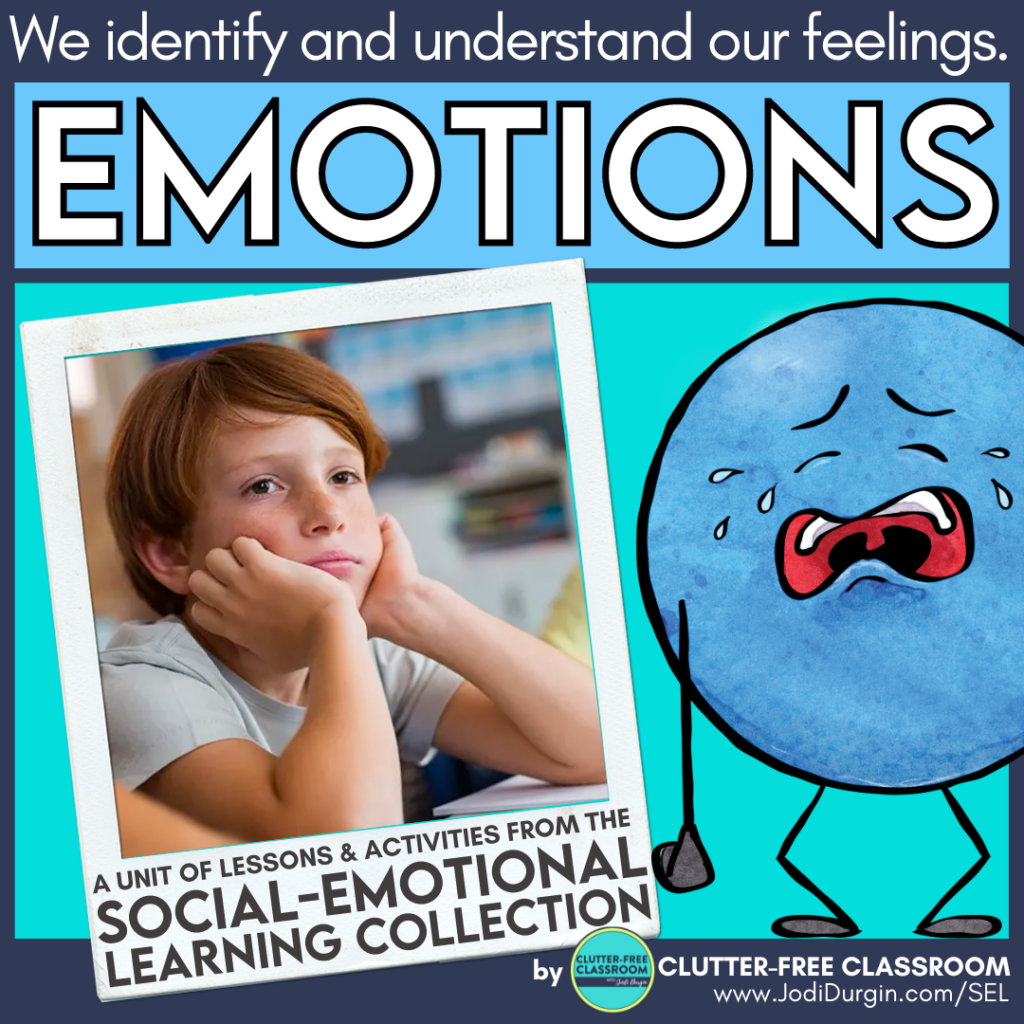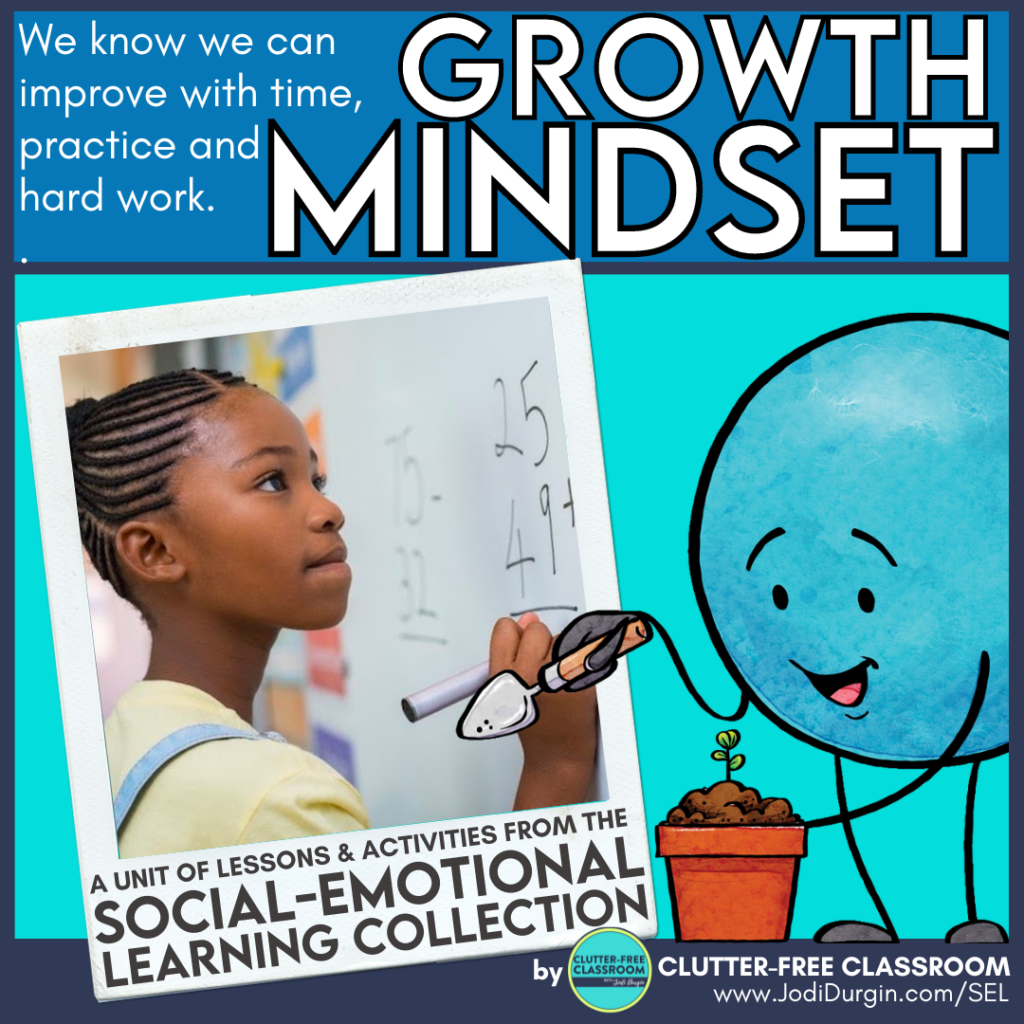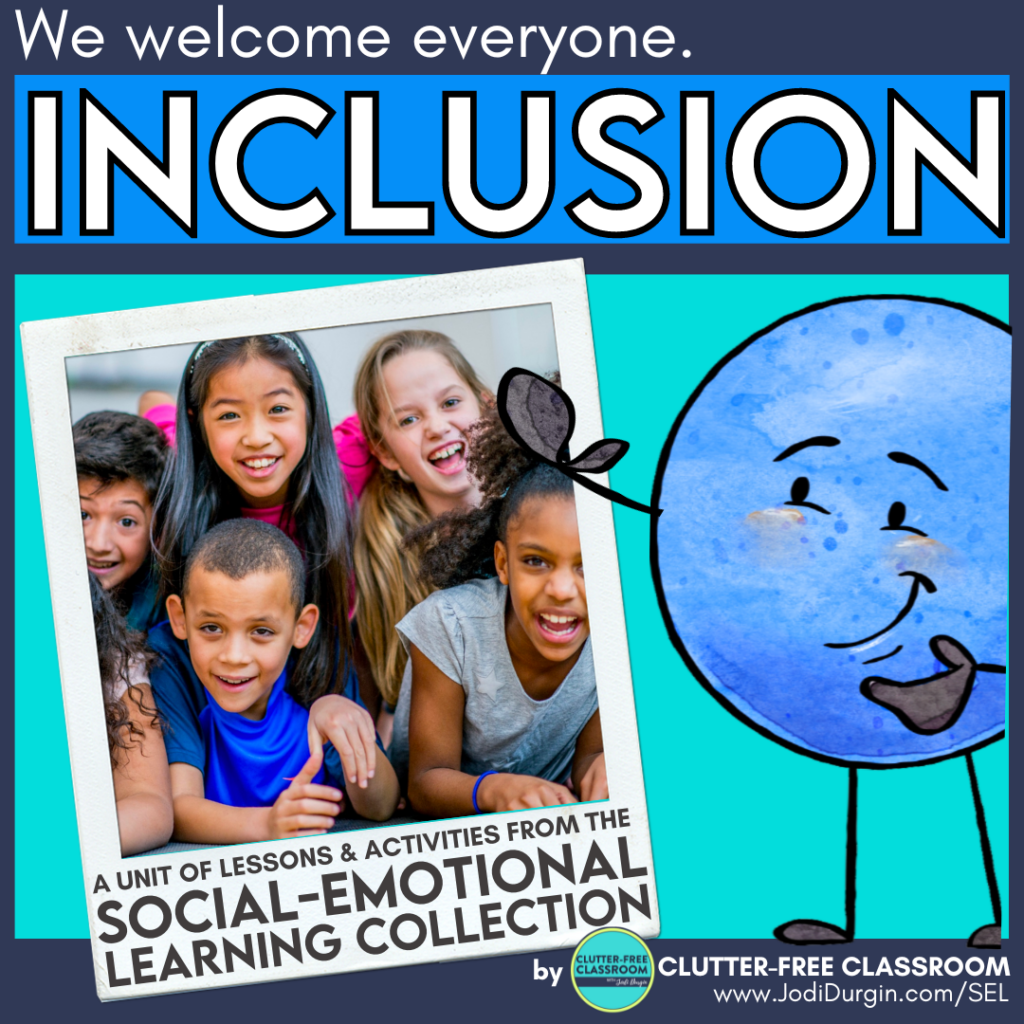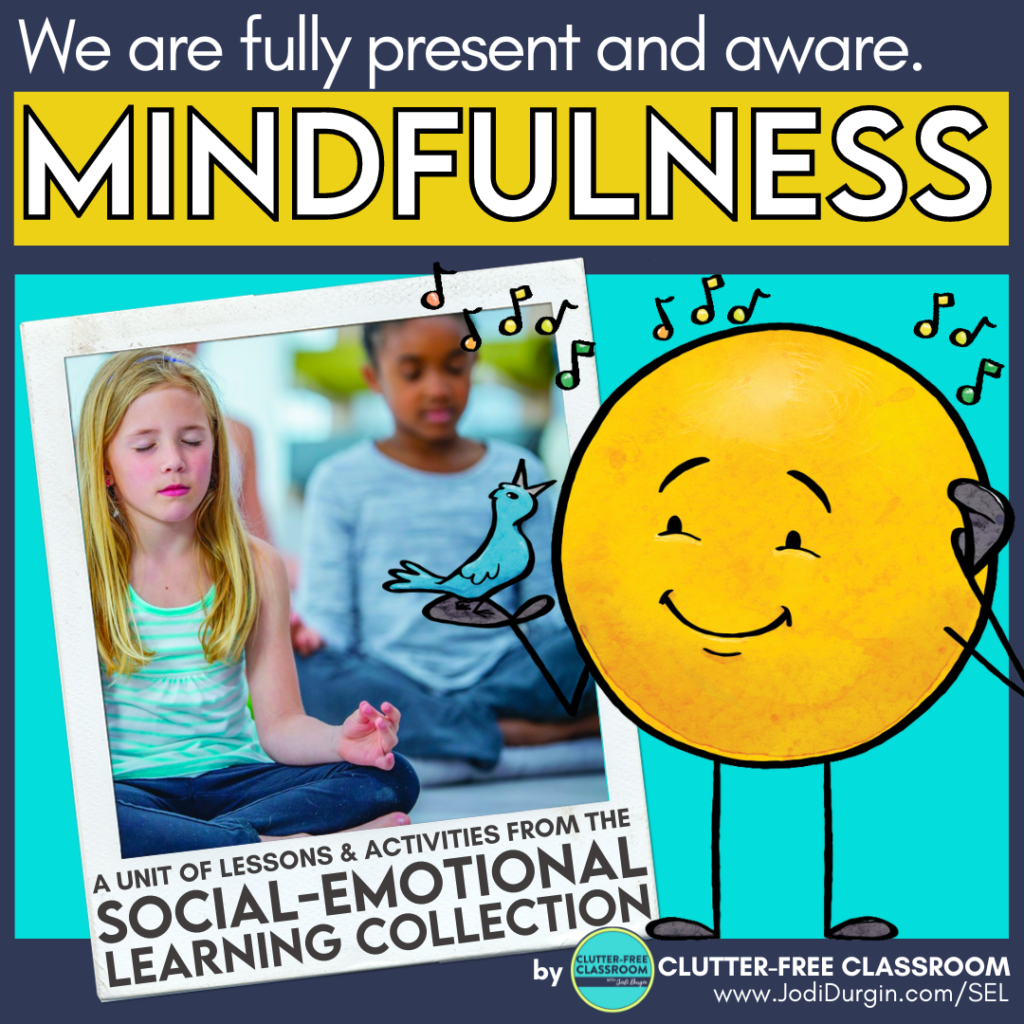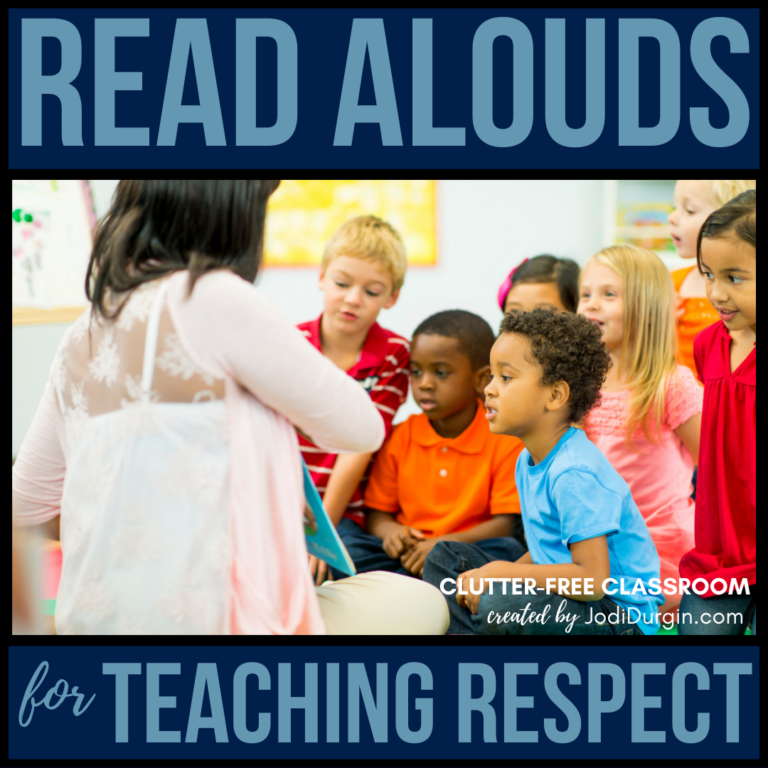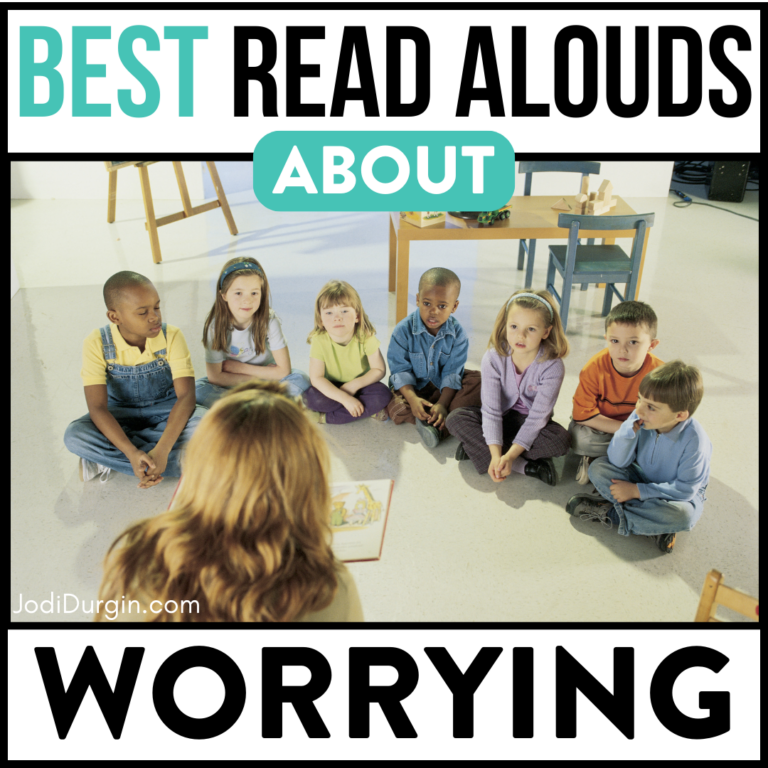As educators, we know how important it is to make time for social emotional learning (SEL) in our school day. However, our instructional time is already very limited. How can we fit it in? The answer is by integrating SEL into everyday instruction. If you are looking for some advice on how to do this, then read below for 20 ideas for integrating SEL into everyday instruction!
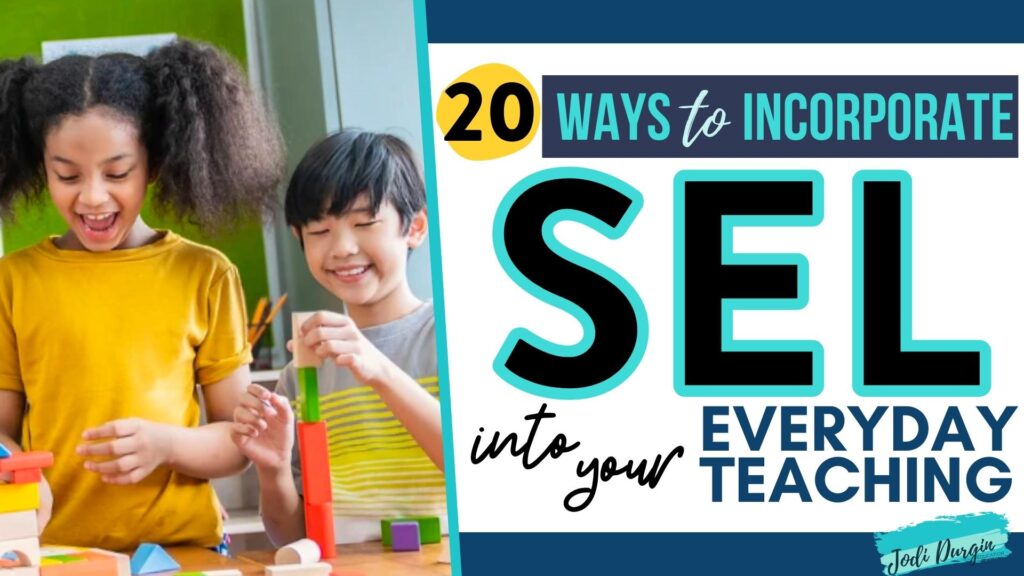
20 Ideas for Integrating SEL into Everyday Instruction
SEL in the classroom is so important! Read below for 20 ideas for integrating SEL into everyday instruction in your elementary classroom.
1. Greet your Students
Greet your students at the door each day. This starts everyone’s day off on a positive note as you welcome them into the room and it also helps to establish a strong teacher-student connection. This practice can also serve as a check-in for your students and it lets you know how they started their day. You can see who isn’t in a great mood and may need further check-ins, who didn’t eat breakfast and needs an extra snack, and who looks disheveled and like they were rushed out of bed and are still half asleep. You’ll be able to see who might need extra love that day.
2. Do Interactive Read Alouds
Interactive read alouds are an excellent way to teach the SEL concept that you are trying to target. Read alouds lead to conversations about conflicts that arise in the book and allow your students to take different perspectives. They are also great to refer back to when an SEL conflict arises in your classroom. Check out our Social Emotional Read Aloud Bundle for a list of 35 books that are excellent for teaching SEL, as well as student activities designed for each book. This is one of my favorite ways for integrating SEL into everyday instruction!
3. Provide Opportunities for Cooperative Learning
Creating opportunities for cooperative learning teaches students how to work with their peers. It will also allow them to recognize different perspectives on problem solving techniques. Group STEM projects are a great way for students to work together to solve a problem that can have many different solutions. Cooperative learning can also be as simple as having students turn and talk to each other during classroom lessons and having students work with partners during different activities.
4. Teach Coping Strategies
Teach students how to manage their emotions when they become overwhelming. Coping strategies give students a toolbox of ways to identify their emotions, also making it easier to calm down. Make sure that your students frequently practice the strategies when they are calm and don’t need them so that when they do need them, they will know exactly how to follow the steps they do need to calm down.
5. Set Up a Calming Corner
A calming corner is an area in your room that allows your students to take a break and regulate themselves when they are feeling a big emotion or are unable to focus on their schoolwork. Only one student at a time should use a calming corner. A calming corner should be in a cozy area of your classroom away from direct view of other students.
It is helpful to have a “calming kit” that can have stuffed animals, putty, fidgets, and anything else you think could be useful to calm your students down. Have your students reflect on what they were doing before they entered the corner, what feeling they were experiencing, and how they chose to calm themselves down. Depending on how their behavior was, it can also be beneficial to reflect on their behavior.
This is a great way to integrate SEL into your classroom learning environment!
6. Use Anchor Charts
Anchor charts are a great way to facilitate students solving problems without teacher support. For each SEL concept that you teach, create an anchor chart as a class and hang it somewhere in your room where students can easily see it. When students are in a situation where they need an SEL skill, they can reference the anchor chart to help them work through what they are experiencing.
7. Role-Play Scenarios
Role-play is an excellent way for students to practice taking other perspectives and solving SEL based problems when they are calm and in a positive learning space. Role playing also provides students with the language that they need to be productive and respectful when conflicts arise. This is a great way to practice conflict resolution and problem solving. These SEL units include role playing activities.
8. Provided Opportunities for Socialization
Students need opportunities to talk to each other. These opportunities should be both structured and unstructured. They need to hear others’ perspectives, learn how different others’ home lives can be, and be familiar with others’ interests and ideas. Talking to each other is also a great way to learn new concepts and be exposed to the different ways that everyone learns. It helps promote diversity and acceptance in the classroom.
9. Play Games
Games are a great way to practice following rules, taking turns, and being respectful. Games can be academic or just for fun! Either way, students are practicing how to share a game, respond to what their partner is doing, and be kind while winning or losing. This promotes social and relationship skills! This is another one of my favorite strategies for integrating SEL into everyday instruction! These SEL units also include fun games!
10. Buddy Classrooms
Having a buddy classroom helps promote positive relationships throughout the school. It provides your students opportunities to work with classmates who are older or younger than them and to hear varying perspectives and ideas. The older kids will feel important and the younger kids will feel special.
11. Teach How to Set Goals and Monitor their Progress on Them
Teaching students how to set their own goals and monitor their progress on those goals helps students both socially and academically. Setting goals fosters a growth mindset, creates self awareness in students, and gives them ownership over their own learning. It promotes a growth mindset by teaching them that even though they don’t know how to do something yet, it doesn’t mean they won’t ever know how to do it or aren’t good enough to do it. Check out this Goal Setting SEL unit!
12. Hold a Morning Meeting
Morning meetings set the tone for the day and promote a class community. They give students the opportunity to greet each other and check in with each other. Morning meetings are also a great opportunity to address any issues that may be arising in the class and provide reteaching on SEL concepts. Morning meetings are also a great time to go over what your students will be doing throughout the day which can help reduce anxiety in students.
13. Provide Opportunities for Reflection
Reflection is a key part of fostering SEL in students. Journal writing is a great way for students to reflect on their day, their emotions and their behavior. When reflection becomes a daily process for students they will be able to also monitor their own learning and their progress towards goals. Try having a 10 minute chunk of your day that is devoted to student reflection. You can turn down the lights, play quiet music, and teach students that this is a time to reflect on their day independently. This is another one of my favorite strategies for integrating SEL into everyday instruction!
14. End the Day with a Checkout
Having a checkout at the end of the day can be quick and simple. Gather your students together and reflect on how the day went. It reminds students that they are part of a community and we need to check in with each other to monitor how the community is working and progressing. It also provides everyone the opportunity to say goodbye and see you tomorrow, fostering positive relationships.
15. Teach and Reteach Empathy
Integrating empathy into your classroom teaches students how to notice, understand, and share the emotions of others. Having empathy can be looked at as paving the way for all other social skills. It will allow your students to understand each other, help each other, show compassion, and be kind to each other. Read alouds, talking about emotions, studying facial expressions, and role-play are great ways to teach empathy. Check out this empathy SEL unit!
16. Talk about Emotions
Frequently talking about emotions normalizes emotions. Kids need to see that everyone feels emotions and works on managing their emotions. Talking about emotions makes it easier for students to identify their emotions when they are feeling them, and select tools to help them manage them. An “Emotions We Can Identify” poster is helpful to have in your room. Add emotions to the poster as you teach them and students understand them. Check out this emotions SEL unit!
17. Provide Flexible Seating Options
Flexible seating options creates an opportunity for students to be responsible and reflective. Having choices of where to sit around the room facilitates students making a responsible choice on where to sit. Once students have chosen where to sit, reflecting on whether or not it was a good place to sit comes naturally. This creates awareness of where and how students learn best. Providing flexible seating options also creates a classroom community where students understand they are responsible for making their own choices and promotes independence.
This is another great way to integrate SEL into your classroom learning environment!
18. Teach and Encourage Positive Self-Talk
Positive-self talk is a cornerstone for fostering SEL and a growth mindset. Provide students with the language that they need to change negative self-talk into positive-self talk that is growth mindset centered. For example, instead of saying “I can’t do this,” say “I am still learning,” instead of saying “I give up,” say “I will try another strategy.” Check out this Growth Mindset SEL Unit!
19. Celebrate Diversity
Celebrating diversity in your classroom makes students see different backgrounds, different circumstances, and different perspectives. It builds your classroom community and allows it to thrive. Kids need to see, hear, and discuss that we are all part of a larger community. Discussions about diversity promotes inclusion. Read alouds can be a great way to celebrate diversity and acceptance. Check out this Inclusion SEL Unit!
20. Teach Mindfulness
Teaching mindfulness helps students learn how to identify their emotions and calm down. Mindfulness also helps with stress and calming down before an assessment. Teach mindfulness by helping students learn breathing strategies, focusing their attention, and relaxing their bodies. Mindfulness also lends itself to the important SEL practice of reflection. Check out this mindfulness unit!
We hope you found these strategies for integrating SEL into everyday instruction helpful!
